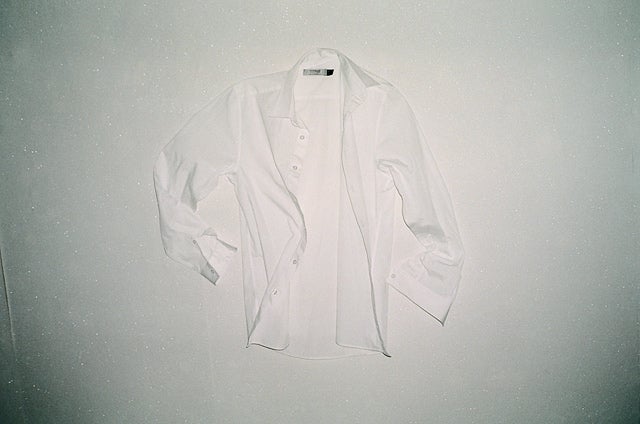Good News: You’re Not As Revolting As You Thought
You know how your white shirts look sadly dingey after just a few wears and washes? Your nice white towels...

You know how your white shirts look sadly dingey after just a few wears and washes? Your nice white towels are suddenly more of a cream? Comforting news! You’re not as greasy and sweaty as you think. Both the problem and the solution are contained in one weird, fun-to-say word: bluing.
If you’ve never heard of bluing, check in with your grandma. Bluing is a very light blue dye (usually ultramarine if you want to get technical) that you add to white loads to counteract yellowing. It’s also non-toxic to the point that old timey ladies used it to soothe bug bites and brighten up white hair. A friend of mine told me her mom would throw a little in her bath water to make bathtime more fun. I digress. Bluing was at its most popular as a household product from the ‘40s to the ‘70s—you know, the years when housewives were judged by the whiteness of their linens—but it’s still readily available today. Why did people stop buying such a wonderful little product? In the 1980s, household bleach got a family-friendly revamp and Clorox started a marketing campaign toward moms. Clean up any mess! Fight any stain! People looking to whiten whites got rid of bluing and picked up bleach.
The problem with bleach is that it actually doesn’t solve most of our day-to-day problems with whites. Bleach reacts poorly with protein stains—sweat, general body grease—and just makes them darker yellow, which, no thank you. We’re talking about your yellowed sheets, towels, and undershirts. Don’t bleach them! Just don’t. As your nose can tell, bleach is also quite toxic, if you’re concerned with that kind of thing.
But back to why your shirts seem to yellow so very quickly in the first place. While bluing went out of style as a household product in the ’70s, it only got more popular with textile manufacturers. They want to make sure their Egyptian cotton towels are the whitest on the shelves, so companies blue their whites before they send them to stores to give them that extra oomph of whiteness. Alas, bluing doesn’t last forever. It actually only lasts a few washes, at which point the cotton reverts to its original hue. Processed, bleached cotton’s natural color is not that yellow, but compared to how white those towels were when you bought them, they look pretty dingy now, don’t they?
Now-a-days there are better sweat stain opponents than bluing—Oxiclean, for one. But if you want to restore that just-bought glow to your whites in time for your mom’s holiday visit, throw a little Mrs. Stewart’s bluing in your washer. It’s the only way to truly restore their retina-searing whiteness.